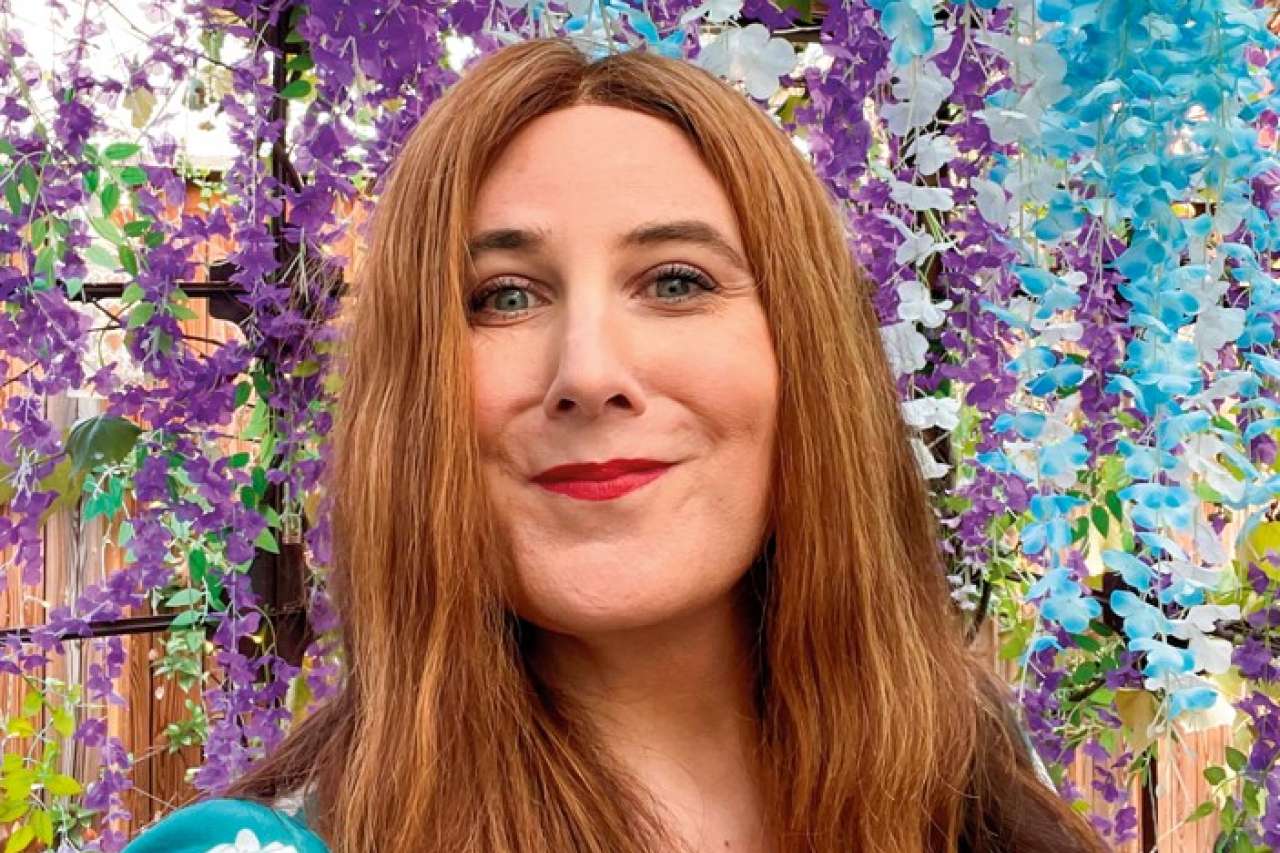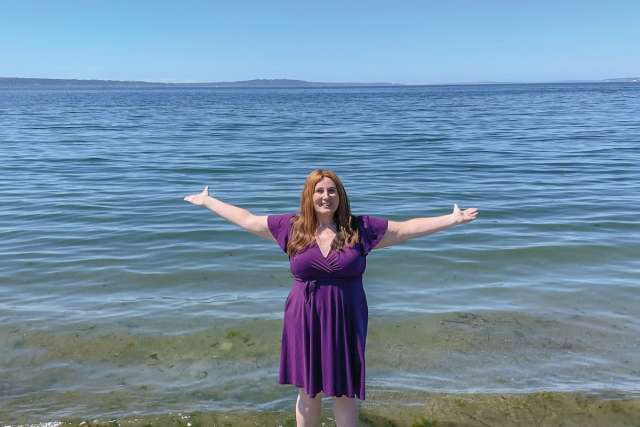Finally, I see my real self.
Even before I transitioned in 2016, I started to think about facial feminization surgery. I was living in Rochester, New York, and I believed my insurance would cover it. But after I went through a whole process to move forward, I was told: “Oh, we’re not going to cover that.” While the idea of the surgery stayed in the back of my mind as a possibility that could actually happen, I approached it with kind of a deficit mindset: “I can get surgery to fix my face,” I thought.
But as time passed and the more I became okay with myself, the more I talked to other people in the community and the more I learned, I came to understand that it was not about fixing anything. Nothing was broken. Nothing about me had ever been broken.
But having facial feminization surgery would allow the mirror to reflect back how I saw myself.
Many people in my position choose not to go through the procedure. For myself, I really wanted to go down that road. Part of my reasoning, perhaps, was that I was very safety minded at the time, and I thought that doing it might make people do a little bit less of a doubletake when they saw me. Then I realized: I’m over six feet tall. People are going to look, no matter what.
I finally started moving toward having the surgery at the end of 2020. It was not an easy journey. The administrative red tape is difficult, especially when you consider that to have a gender-affirming surgery, you’ve got to get sign-off from both medical and mental health providers. A cisgender person who wants a breast enhancement doesn’t have to provide such documents, so it feels kind of wrong. I was going to say interesting or weird, but I think it’s wrong.
Also, you have to be in therapy for a while before most providers will sign off on the procedure. At the time, my therapist did not feel it was her role to affirm that I was in a place in life to have facial feminization surgery. She didn’t feel making such a determination was an appropriate role for any psychologist. Eventually, she did sign off after discussing it with her practice manager. But that was difficult for me — I felt like I was not in control of what would happen next. It was like: This is what I want. This is what I need to do. I’ve been living transitioned for almost five years. And I have to ask permission from somebody who doesn’t really know me, for them to say, “Yes, you can do this for yourself”?
Then there’s the issue of trying to find a surgeon. There is a long waiting list for these surgeries, and you don’t want to go to just anyone. Trans women try, for the most part, to take care of each other, and we let each other know who to see — and who not to see. Justine Lee, MD (FEL ’13), PhD, at UCLA Health, was highly recommended by other members of the community. The more I talked with people who had been under her care, the more I started to feel safe with her and trust her, even before I met her.

A patient already feels a lot of anxiety around this kind of surgery because there’s no real way to know what one’s forehead is going to look like with a four or five or six millimeter difference, so you really have to trust your surgeon. Dr. Lee made me feel comfortable; she didn’t try to push me in any particular direction. “These are options,” she said to me. “These are some things that people have done in the past. If you want that, we can do it. And if you don’t want it, we don’t have to.”
The surgery itself was terrifying. I’m not going to lie: It hurt. A lot. You wake up in pain. And the recovery process was no easier. The swelling is there for so long. I got anxious: “Oh my gosh, is this ever going to look better?” And it can get lonely, because I didn’t want to go out in public — I looked like I’d been beat up. It was a very tender time. A very difficult time.
It took about six weeks for the swelling to go down enough for me to start to notice changes. “Wow,” I thought, “this is awesome!” I still didn’t have a good idea of where things were heading because it took about a year for my face to feel settled.
Now, when I look in the mirror, a year-and-a-half after my surgery, I see Chloe, 100%. I don’t feel like I’m trying to hide anything anymore. Sure, there are some things that I would like to keep working on — we all have that feeling — but I fully see myself.
Still, it’s hard sometimes because there are so many physical remnants of the identities I used to hold. I have the scars and lingering aftereffects of so many injuries and concussions from playing college football. But now I see me, and it makes me want to do better. It makes me want to take care of myself. I want to be healthy. Whereas before I believed there was no future for me — I, at times, thought of taking my own life — today I want to have one. I can only speak for myself: This was, for me, a life-saving procedure.
And now it is important for me to stand up. The hate and violence directed against trans people is an attempt to intimidate and isolate us, from each other and from our larger communities. It is essential for those of us who can be visible to make space for those who may not be there yet. That’s why I share my story. People want us go away, and that makes me, more than ever, not want to go away. Other trans people speaking out has made my life better. Now that is my mission. People have done for me, and now I need to do for other people.

